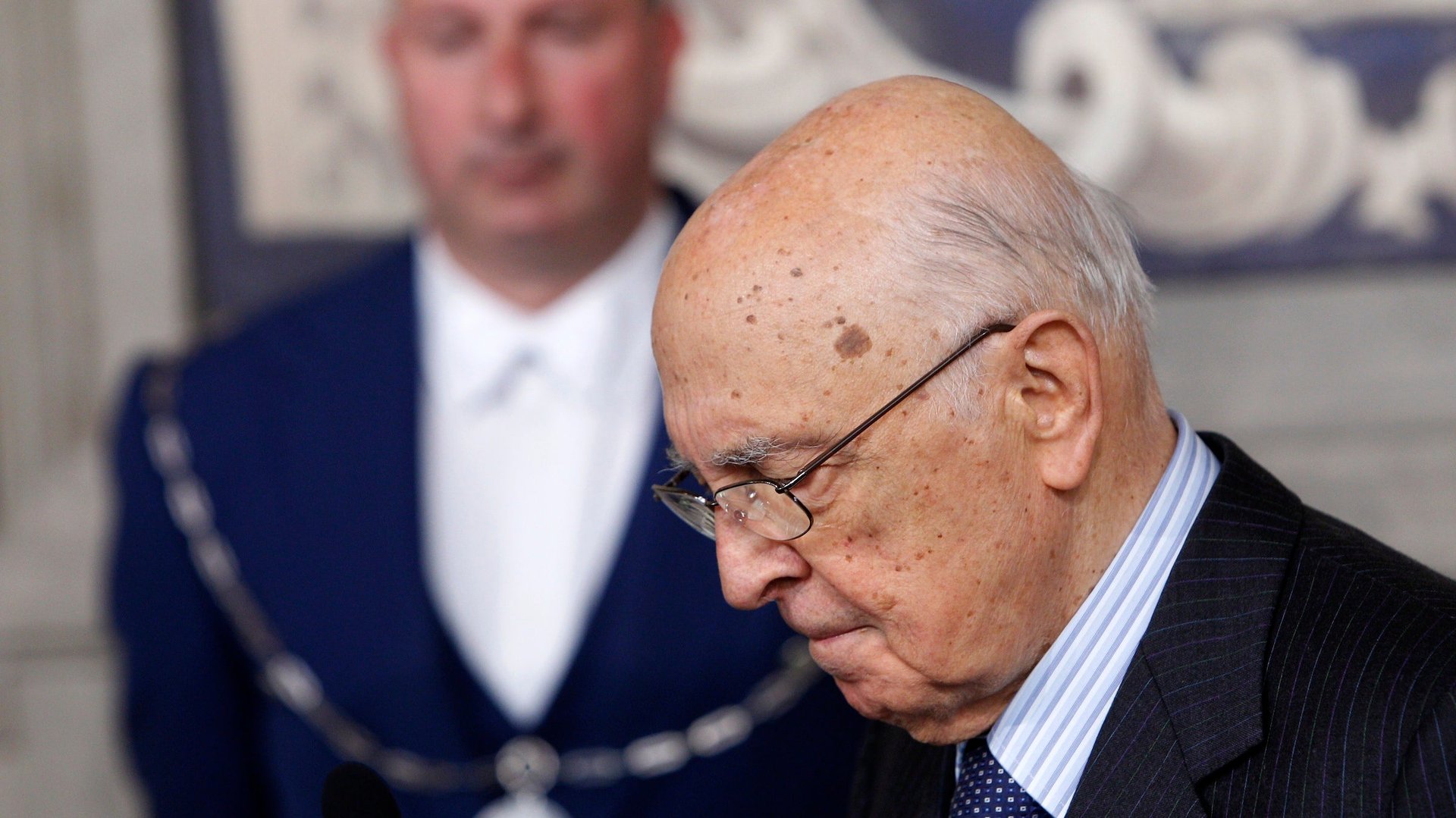Italy backs away from the precipice, but it’s still not sure where else to go
In an unprecedented move, 87-year-old Italian president Giorgio Napolitano agreed not to retire, and instead won re-election as Italy’s president for another seven-year term. Italy has been without a government since parliamentary elections in February, and with Napolitano’s current term ending in May, analysts feared that the country would be without a president too—a role that is important in brokering political disputes.


In an unprecedented move, 87-year-old Italian president Giorgio Napolitano agreed not to retire, and instead won re-election as Italy’s president for another seven-year term. Italy has been without a government since parliamentary elections in February, and with Napolitano’s current term ending in May, analysts feared that the country would be without a president too—a role that is important in brokering political disputes.
Markets took Napolitano’s re-election as a good sign—at least someone is in charge. The leaders of several political parties had apparently begged the president to stay in his post. He brokered the deal that put the country’s last, broad coalition in place, and allowed technocrat Mario Monti to govern as prime minister for over a year. He could do something similar now.
But although Italy appears to have backed away from a worst-case scenario, its politics is perhaps even more divided than it was in February. Democratic Party leader Pier Liugi Bersani, whose party won the most votes in the February elections, announced his resignation on April 20 after his own party twice failed to approve his presidential nominations. The party now appears split into factions. But even though Silvio Berlusconi’s Popular Democratic League Party has gained momentum since the electoral race, so has Beppe Grillo’s third-party Five Star Movement. In short, there would probably be no clear victor if Napolitano decided to call new elections.
At the very least, analysts hope, Napolitano has some sense—which may help Italy avoid the most politically unstable path. Writes Eurasia Group’s Peter Ceretti:
The ultimate word on Italy’s political trajectory now lies with Napolitano, as only he can dissolve the parliament. Napolitano’s priority is to avoid a quick re-vote, in part due to pressure from unions and the business community, which demand an end to the current political impasse.
For now, the markets have reacted strongly to the hope that Italy is on a more stable track. Yields on Italian bonds—which fall when there’s a better chance the country will remain stable—fell to their lowest levels since November of 2010, before investors were really worried about Italy’s financial health.
